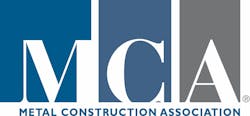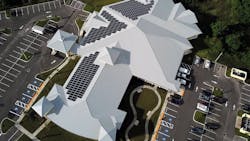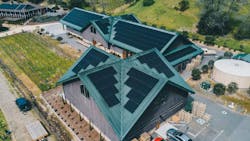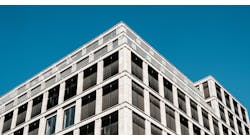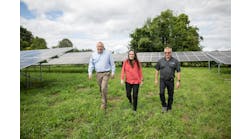Solar PV and Metal Roofing, The Perfect Pair To Improve Building Performance
If you see solar becoming part of the energy-saving strategy for your commercial or industrial building, without question, you need to start thinking about a metal roofing system. Whether new construction or retrofit, metal is the best platform for residential, commercial and industrial rooftop solar photovoltaic systems.
Even if you are not planning to add solar soon, Metal roofing is a wise choice to prepare for the future. Metal provides the longest service life and is the most sustainable of roofing materials while providing the simplest platform for attaching solar panels. Combined, these qualities make metal the ideal choice for rooftop solar.
Rooftop solar is a strong and growing sector.
The U.S. Energy Information Administration reports that more than half of new electric-generating capacity in the U.S. will be solar and approximately a third of solar PV deployment worldwide are rooftop installations.
In addition to state and local incentives and utility rebates, significant funding from the U.S. Inflation Reduction Act is expected to increase interest in rooftop solar.
The Solar Investment Tax Credit has been expanded to offer a 30% tax credit for installing photovoltaic systems through 2032. Plus, there is a new 40% investment tax credit for solar and wind projects in low-income areas. The Energy Investment Tax Credit has been extended for energy property projects focused on solar energy property and the Renewable Electricity Production Tax Credit extends the current tax credit for renewable energy sources.
Short and Long Term Benefits
Before installing solar on any roof, you need to consider whether the roofing system will outlast the life of the PV system. The mean service life of solar PV is 32.5 years. It will be expensive to dismantle the solar modules, re-roof and re-install the PV panels when the TPO (Single Ply Membrane) or asphalt shingle roof deteriorates after 15 or 20 years. On top of that, damage can occur during the reconstruction process. Plus, the off-line solar system is not generating power for the facility while off-line.
Metal roofing, on the other hand, lasts two to three times as long as most other roofing systems, and longer than the PV system itself.
Metal roofing is also the most durable in extreme weather. In its recent Mitigation Assessment Team Report (MAT), FEMA concludes that metal roofs, with the correct installation and quality underlayment, performed substantially better in severe conditions.
In a recent Metal Construction Association study, standing seam coated steel was proven to have a service life of 60+ years. This long-term endurance makes new and existing metal roofs ideal for rooftop solar installations.
“You can literally put solar on a 20- to 25-year-old metal roof and the roof will still outlast the solar system. This is a huge plus in terms of return on investment and the total cost over the lifetime of the roof-plus-solar system investment,” explains Mark Gies, director of solar business, S-5!, in a Rail-less Solar on Metal Roofs CEU webinar.
While insulated metal roofing panels carry a higher first cost than some other roofing systems, it’s important to evaluate the roof and solar system together as a single asset, explains Bob Zabcik, P.E., LEED AP, technical director for the Metal Construction Association. Because there is less labor and material involved in installing solar on a metal roof, the combined total costs come out to be less expensive.
Streamlined installation
Metal roofing systems provide the benefit of a rail-free solar attachment, enabled by the structural ribs or seams on the metal surface. This direct attachment method simplifies installation by reducing the need for components like flashing and ballasts, thereby lowering the weight on the roof. In comparison, other roofing systems necessitate a labor-intensive rail system for solar panel attachment.
To quantify these benefits, S-5! conducted a cost comparison between rail and rail-less solar attachments. Their study found that using a rail-less metal system resulted in a 42% reduction in cost of mounting materials, a 30% decrease in labor costs and installation time, and a 61% reduction in shipping costs, leading to a total installed mounting system cost savings of 38%. An 85% weight reduction in mounting system components also directly translates in the a reduction of carbon footprint of the same figure.
Another advantage of “direct attachment” is 25% better load distribution. By distributing attachment points more evenly, the structural load is spread uniformly without any roof penetrations, thus also better preserving the roof’s integrity.
To assist roofing contractors, MCA provides a Metal System Project Checklist on page 10 of the "Metal Roofing and Solar PV System Part 3 – Mounting System Installation" white paper.
The Optimal Choice
The numerous advantages of combining solar panels with metal roofing create an ideal solution for sustainability, energy efficiency, and cost-effectiveness. Additionally, the infinite recyclability of metal roofing makes it an environmentally friendly choice.
For more information, download MCA’s three-part series on metal roofing and solar PV.

